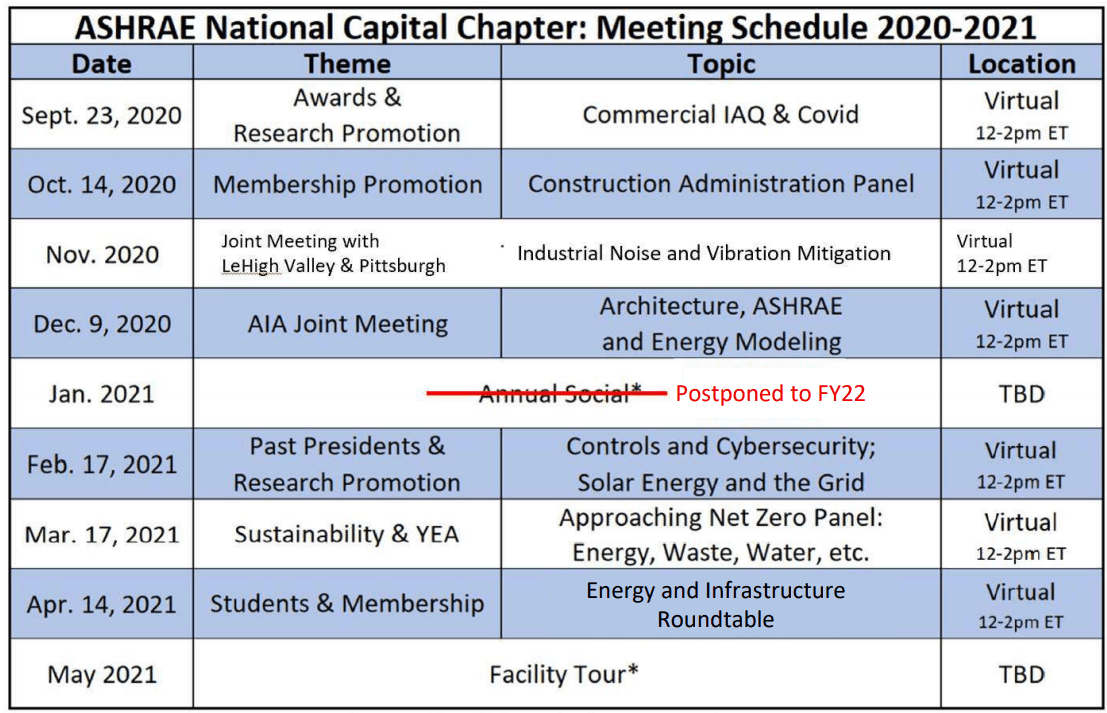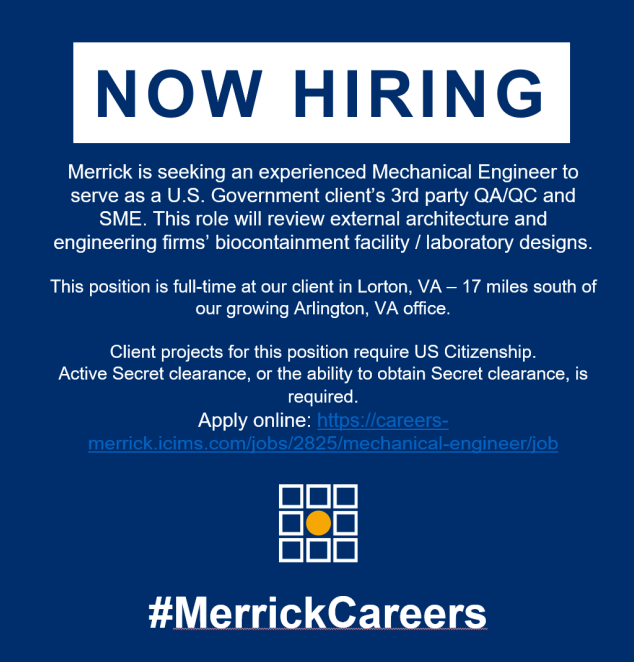Capitalaire
The National Chapter of ASHRAE
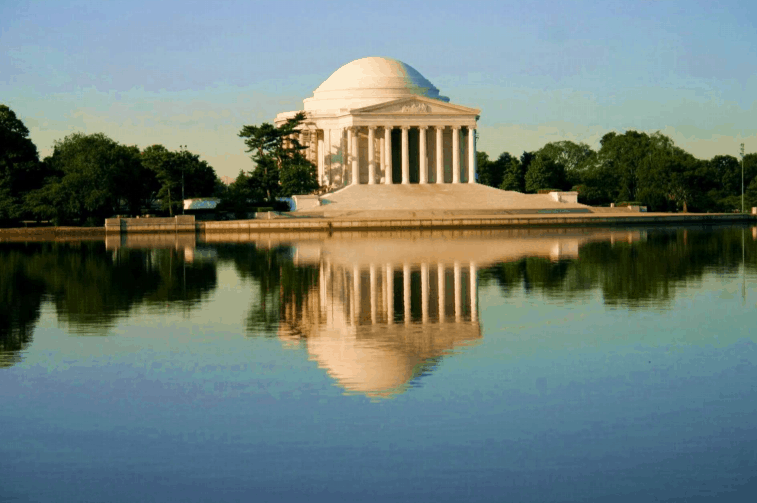
The ASHRAE Digital
Lighthouse and Industry 4.0
June 2021
President’s Corner
To the National Capital Chapter of ASHRAE,
With June comes a myriad of things to highlight so I will defer to an Engineer’s response to the common request of providing a concise list:
- Happy Summer
- Welcome Back (to as close as we have been in a while) to Normalcy
- Congratulations on a Successful 2020/2021 NCC ASHRAE Year
I encourage you to please read the entirety of this final Newsletter of the year as there is a lot of good information regarding upcoming events. A couple items that did not have a large enough visual presence, but we still wanted to bring to your attention are as follows:
- Visit the link below for info on ASHRAE Society’s Virtual June 29th Conference:
https://www.ashrae.org/conferences/2021-annual-conference - For those interested in an HVAC Design and Operations Training:
https://www.ashrae.org/professional-development/all-instructor-led-training/hvac-design-andoperations-training
We had a great YEA event in May with over 40 people attending the Johnson Controls Virtual Factory Tour. Thank you to Stephanie Gonzalez and Zach DeLuke for doing a great job this year with YEA. They really took advantage of the virtual event restriction and far exceeded any expectations with the quantity and quality of the successful events that occurred this year! I will end my final communications as President the same way I started, with profound gratitude! To our sponsors, thank you again for supporting the NCC during this extraordinary time. To our members, thank you for navigating this virtual year with us; especially your patience as we quickly evolved into a well-oiled machine. Please do not hesitate to reach out with any feedback, ideas or requests pertaining to what you found most valuable this year that you would like to see continued in one way or another. To our BOG, Committee Chairs and Volunteers, THANK YOU for all that you do! To everyone that has ever considered volunteering, there is no better time than now as we are reminded more than ever of the significance of community.
Best Regards,

Stephen Niez
President, National Capital Chapter, 2020-2021
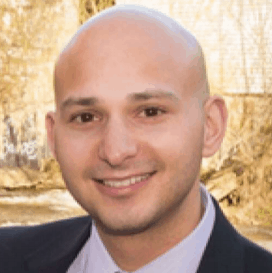
President Elect’s Corner
To the National Capital Chapter of ASHRAE,
Well spring has definitely arrived and other than the impending invasion of insects I know what you are all likely thinking… “Who is it again that will become president of ASHRAE’s National Capital Chapter next year?” Fret not, there will be plenty of time and future president’s corners for introductions, so for now that will have to wait. Of greater more pressing importance, I would like to take the opportunity to thank this past year’s president, Stephen Niez.
Stephen may go down in history as the Faceless President or perhaps the Commander in Zoom, but his contributions to this chapter are numerous and I would ask you all to join me in a tip of the hat to
all of his dedication and valued volunteerism. We look forward to a great 2021-2022 ASHRAE year and especially getting to reconnect face to face, which may be on the horizon for us in the not too distant future.
Sincerely Your President-Elect,
Ryan Westlund
| 020-2021 Board of Governors | ||
|---|---|---|
| President | Stephen Niez | [email protected] |
| President-Elect | Ryan Westlund | [email protected] |
| Vice President | Nick Barrett | [email protected] |
| Treasurer | Mike Marder | [email protected] |
| Secretary | Jonathan Rumbaugh | [email protected] |
| Sr. Governor | Alec Petrillo-Groh | [email protected] |
| Governor | Michael Spencer | [email protected] |
| Governor | Drew McPheeters | [email protected] |
| Governor | Lauren MacGowens | [email protected] |
| 2020-2021 Committee Chairs | ||
|---|---|---|
| Annual Social | TBD | [email protected] |
| CRC | Laura Morder Stephanie Mages |
[email protected] |
| Directory | Morgan Stevens | [email protected] |
| Facility Tour | Catherine Jones | |
| Finance | Nick Barrett Ryan Westlund Stephen Niez Mike Morder |
[email protected] |
| Golf Outing | Domenic Catalfamo Morgan Steven |
[email protected] |
| Gov't Affairs | Roger Chang | [email protected] |
| Historian | Gary McKee | [email protected] |
| Honors/ Awards | Alec Petrillo-Groh | [email protected] |
| Membership | Drew McPheeters | [email protected] |
| Newsletter | Rachel Coyle | [email protected] |
| Reception | Chris Able Bailey Estes |
[email protected] |
| Refrigeration | Catherine Jones | [email protected] |
| Research Promotion | Kirsten Burk | [email protected] |
| Student Activities | Dante Freeland Catherine Jones |
[email protected] |
| Sustainability | Ryan Westlund | [email protected] |
| Tech Awards | Ryan Westlund | [email protected] |
| Website/ Electronic Communications |
Michael Spencer Lauren MacGowens |
[email protected] |
| Women in ASHRAE | Bailey Estes | [email protected] |
| Young Engineers in ASHRAE | Stephanie Gonzalez | [email protected] |
| Programs | Patti Gunderson | [email protected] |
Corporate Sponsors







Programs
Recap of our final 2020/2021 Webinar on ENERGY & INFRASTRUCTURE
Dr. Payman Dehghanian Assistant Professor, GWU

Dr. Payman’s research interests include power system resilience and reliability assessments, renewable energy integration in power grids, and smart electricity grid applications.
Smita Chandra Thomas, Founder & Principal, EnergyShrink

Smita is an expert in energy efficiency in buildings at the cutting-edge of green technology, energy management strategy, and techno-economic analysis.
Andy Ludwig Manager, ThinkBox Group LLC

Andy has experience with improving building infrastructure while reducing operating costs, developing energy programs, and managing energy efficiency projects.
On our April 14th webinar, three speakers wrapped up the 2020/2021 season using the compelling case of freezing conditions earlier this year in Texas and surrounding states. Dr. Payman Dehghanian, Smita Chandra Thomas and Andy Ludwig made the compelling argument that energy efficiency and building resilience are inextricably interwoven with environmental conditions – both weather and climate – and that we must understand, respect and respond to these drivers with good design employed early and intelligently.
Engineers and designers operate in the real world. Dr. Payman Dehghanian pointed out that the operation of the electric power grid is driven by environmental factors at different levels:
Power generation
- renewable sources depend on weather conditions (sun, wind, rain to fill reservoirs for hydro-electric plants)
- fossil fuel plants rely on uninterrupted delivery of fuels – coal, natural gas, etc.
Transmission and distribution infrastructure are vulnerable
- exposed to environmental threats – physical damage that disrupts transmission for hours, days or weeks
- directly tied to temperature - extreme heat and cold reduce capacity
Demand: electricity consumption (loads) rise with extreme temperature and other weather-related conditions
Worldwide, Climate Change has resulted in increased frequency and intensity of extreme wind, precipitation, and temperature events; the resiliency of power grids needs rise in response. This entails:
- Accurate detection of potentially disruptive events
- Ready-made plans for efficient mitigation and rapid recovery from electricity outages
The 2021 cold extreme in Texas had dangerous and deadly impacts:
- > 4.5 million homes and businesses lost power
- > 70 deaths
- Water and gas outages, power quality/safety issues, and price spikes
- State of emergency declared
Why did this happen?
- Generation-demand imbalance. The power system could only meet 44 GW out of 75 GW of projected peak demand in the morning of Feb 15
- The power generation plants in the area were not prepared for extreme cold weather conditions – gas pipelines froze; plants could not generate power without fuel
- Power-sharing within Texas between neighboring jurisdictions was not possible due to extreme conditions for all entities – the event was so widespread
Guidelines for system-wide resilience:
- Structural resilience: grid infrastructure investment, temperature-informed expansion planning, optimization of gas, water, and electricity networks, and stronger interconnections
- Operational resilience: energy storage and flexible resources, sectionalizing circuits, network flexibility and maneuverability, microgrid operation and control, automatic load control and demand response
Smita Chandra Thomas introduced us to the idea that building owners and residents can proactively protect themselves by designing or retrofitting for resilience in buildings. What are the working definitions?
- Resilience in buildings is the ability to continue functioning or to recover quickly when faced with some type of external failure
- The primary principles of resilience are to identify & manage the risk
- Risk can be managed at several levels: physical, infrastructural, environmental, economic-social, political/regulatory, and organizational
- Typical risks for buildings: floods, fires, hurricanes, earthquakes, and wind
Risk mitigation should happen both in design and in retrofit.
- Independent back-up power generators with reliable disconnect systems and batteries or safely-stored fuel to span anticipated intervals of municipal power disruption.
- Better envelope and efficient mechanical systems to help stored back-up power last longer.
- Protect distribution systems: insulate piping and provide trickle flows, prevent sewage backflow, ensure multiple entry points for emergency access, and provide alternate communication capability.
- Identify and modify site-specific risks – trees, swales, elevations (example: Historic San Francisco building being lifted 10 ft due to sea level rise)
- Strengthen roofs, tie down building systems, water heaters, and furniture
These design and retrofit modifications do not have to be onerous, and they are smart: the National Institute of Building Science estimates private-sector mitigation retrofits save $4 for every $1 invested. Also, battery prices have fallen 89% in 10 years and are expected to continue decreasing. The cost to install solar has dropped by more than 70% over the last decade (https://www.seia.org/solar-industry-research-data).
Another good example for resilience at a community scale are microgrids. Multiple buildings can share energy sources, information processing, and a strong infrastructure. In case of a major disruption in the main grid, microgrids have the capability of isolating, or “islanding”, and independently satisfying the energy needs of that community.
Andy Ludwig closed the session with examples of Resilience in Operation, using the George Washington University campus as an example. Andy reminded us that there are two types of resilience:
Organizational: continued operations despite adversity, by having redundancy, for example n+1 boilers; physical and cyber security; accessibility for operators to log into the system remotely; reliability; energy storage and power generators, storm and drinking water management plans.
Societal/structural: mitigating contribution to climate change, by having renewable energy, energy efficiency, and water efficiency management
Of course, financing these interventions is the challenge
- Headwinds
- Renewable and energy efficiency projects have 10+ years of simple payback period and it’s a challenge to justify the investment when most building owners are looking for a 5-yer simple payback. For instance, batteries can shave peak demand and serve as emergency backup power. However, the upfront investment is very high. Decision makers often do not recognize the benefit. Higher Ed is an exception.
- Utilities do not offer proper regulations for distributed renewables. The Ross Hall building in GWU has a cogeneration unit that can produce enough electricity to power 2 buildings, but they are not allowed to “island” and use it in case of a power outage.
- Tailwinds
- Financing mechanisms: PACE, Energy savings performance contracts, DC Green Bank, Energy service agreements
- Government mechanisms: DCSEU incentives as carrots, and Building Energy Performance Standards (BEPS) as sticks
The good news is that energy efficiency projects DO pay for themselves over time, and the time frame will shrink as the cost of power rises and the value of resiliency become more apparent. So best practices for design engineers and building owners:
- Combine short- and long-term payback projects (in order): steam traps, water, lighting, pumps/VFDs, boilers and chillers
- Prepare systems ahead of time to be more resilient before extreme event happens
- In building operation: have one person focused on energy efficiency; one person bringing IT and operations together; and one person in the maintenance team to translate the software output into immediate actions
- Peer pressure and shaming (even though that sounds harsh!) work as motivators for behavior change
CONCLUSION:
Organization and societal resilience require 10+ year horizon planning – but climate drivers will only get worse. We must engage now in regulatory improvements and building level preparations in order to meet the challenge successfully!
Thanks to all who have presented, planned, and attended our series of webinars during this unprecedented year. Our hope is that by next fall we will be able to safely welcome you back to in-person gatherings. This has been a learning experience for us, and we hope we’ve been useful. Your comments after each presentation help us to improve educational offerings in the future.
SHARE YOUR REQUESTS FOR FUTURE TOPICS, COMMENTS, CONCERNS OR KUDOS:
[email protected]
If you have attended any of our previous virtual meetings and still need a certificate, please email [email protected] and request a survey link. Your completed responses will qualify you to receive your certificate as a pdf via email.
NOMINATIONS FOR 2021-2022 OFFICERS AND BOARD MEMBERS
In accordance with the chapter bylaws, a Nominating Committee formed to recommend candidates for the chapter officers and governors, except President. The President-Elect shall automatically succeed to the office of the President at the conclusion of the President's term of office. Each member elected to the Board of Governors has provided a written statement that the candidate is a member in good standing in the Society and consents to stand for election. The members of the nominating committee Morgan Stevens (Chair), Nick Barrett, Patti Gunderson, Jim Grant, and Alec Petrillo-Groh enthusiastically recommend:
President: Ryan Westlund
President-Elect: Nick Barrett
Vice President: Mike Morder
Treasurer: Jonathan Rumbaugh
Secretary: Michael Spencer
Senior Governor: Stephen Niez
Governor 1: Lauren McGowens
Governor 2: Mikelann Scerbo
Governor 3: Drew McPheeters
Governor 4: Patti Gunderson
Additional nominations of members in good standing who consent orally or in writing to be candidates may be made via email, due to this past year’s covid limitations/restrictions/volunteers’ extenuating circumstances, to Jonathan Rumbaugh at [email protected] prior to June 22nd. If by this date, more than one such nomination from a member in good standing is made for any one office or membership on the Board of Governors, a virtual vote shall be taken to select the name of the opposition candidate to be placed on the ballot.
Voting for candidates will take place virtually in June. You may also vote for any position by email to Jonathan Rumbaugh, [email protected], prior to virtual vote in June.
Technology Awards
Congratulations to last year’s Technology Awards champions and winners at the chapter and regional (III) level!
The following submissions from the National Capital are the regional winners in the respective categories:
- Educational facilities - New: Alice West Fleet Elementary / CMTA
- Commercial Facilities - New: DC Water Headquarters / SMITHGROUP
- Commercial Facilities - Existing: Dumbarton Oaks / RYN ENGINEERS
- Public Assembly - New: International Spy Museum / VANDERWEIL
Well done for those who submitted in the 2020/2021 year, you have been moved onto Regional.
- Educational facilities - Existing: King William County Public Schools / ABM
Your team and your clients deserve recognition for outstanding designs. If you’ve done something a bit unusual, or pushed the envelope for energy or comfort performance, or managed awesome integration with architecture and other engineering disciplines, we want to know!
The purpose of the ASHRAE Technology Awards program is to:
- Recognize ASHRAE members who design and/or conceive innovative technological concepts that are proven through actual operating data;..
- Communicate innovative systems designs to other ASHRAE members;
- Highlight technological achievements of ASHRAE to others, including associated professionals and societies worldwide, as well as building and facility owners...
Each year the Society may present awards in six categories: Commercial Buildings (New, Existing, Existing Building Commissioning); Institutional Buildings (New, Existing, Existing Building Commissioning) Health Care Facilities (New, Existing, Existing Building Commissioning); Industrial Facilities or Processes (New, Existing, Existing Building Commissioning); Public Assembly (New, Existing, Existing Building Commissioning); Residential
For each category first, second, and honorable mention winners may be named. Also, one of the category first place winners may be selected to receive the ASHRAE Award of Engineering Excellence. The recipient will have demonstrated the best overall compliance with the judging criteria...
See the ASHRAE Society level technology award winners here: https://www.ashrae.org/membership/honors-and-awards/technology-awards-program

Benefits of Winning a Technology Award
CHAPTER/REGIONAL TECHNOLOGY AWARD - SHORT FORM
INTRODUCTION:
This Short Form has been developed to stimulate more participation in chapter and regional competition. This form is not intended to replace the full Society Technology Award Application form. Regional winners using the short form will be required to complete the full Technology Award Application form before their applications can be forwarded for Society Competition. (This form does not require extensive narrative, plans or photographs.
INSTRUCTIONS:
A. The individual submitting the Technology Award Application must be a current member of ASHRAE who had a significant
role in the design or development of the project.
B. Complete the "Short Form" and use it as the cover page.
C. Provide a system schematic/diagram not larger than 11” x 17” in size. In addition, attach a brief narrative (maximum of 2 pages). The narrative should include the gross and net building areas applicable to the project, a description of the major building areas (i.e.,operating rooms, laboratories, computer rooms, industrial processes, offices, warehouses) and a brief discussion regarding the following six criteria ( if a criterion is not applicable, state accordingly):
- Energy Efficiency
- Indoor Air Quality
- Innovation
- Operation & Maintenance
- Cost Effectiveness
- Environmental Impact
D. Submit your schematic, brief narrative, and completed form to your Chapter Technology Transfer Committee Chapter (CTTC) Chair for judging at the chapter level in accordance with their instructions.
E. The ASHRAE Technology Award program is intended for built projects. First place winning projects should be eligible for submission to the Society level competition on September 1st of the following Society calendar year. Therefore, a project submitted to a Chapter or Regional competition shall be occupied prior to September 1st of the current Society year in order to satisfy the Society level competition requirement of one full year of occupancy.
First place winners in each category from chapter competition will be submitted by the CTTC Chapter Chair to the CTTC Regional Vice Chair for judging in the Regional Technology Awards competition. At the discretion of the CTTC Regional Vice Chair, this may require completion of the full Society Technology Award Application form if the chapter submission was done on the Short Form Application.
The CTTC Regional Vice Chair will invite first place winners in each category from regional competition to submit them for judging in the Society level Technology Awards competition. The regional winners will be given the opportunity to incorporate new information or otherwise improve their submittal before submitting it to the society level competition (e.g., by addressing comments from regional judges). At the discretion of the judging panels at the chapter and regional competitions, more than one first place winner may be awarded in each category.
For the regional competition, submit the number of copies requested by the Regional CTTC Vice Chair. The CTTC Regional Vice Chair may require entries into the regional competition to be done on the full Society Technology Award Application form. In any case, all submissions to the Society level competition must be done on the full Society Technology Award Application form.
F. It is highly recommended that each entrant confirm by letter (and retain a copy for record) to the owner that the owner has granted permission to submit this project to competition.
NOTE: ASHRAE Technology Awards are the HVAC&R industry's most prestigious honor for efficient energy use in buildings and environmental system performance. While the awards do not certify responsible charge or professional license status, they do recognize outstanding design innovation and successful implementation.
CHAPTER/REGIONAL TECHNOLOGY AWARD - SHORT FORM
Job Postings
2021 REGION III CRC ANNOUNCEMENT
Save The Dates

2021 ASHRAE Region III CRC
August 12, 13 and 14, 2021
PENN STATE, UNIVERSITY PARK / STATE COLLEGE, PA
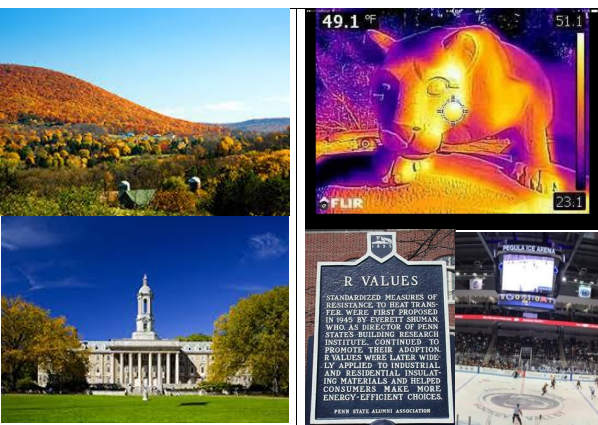
SCHEDULE OF EVENTS:
Thursday, August 12:
Registration: 7:30 am – 5:00 pm
Technical session 1 9:00 am – 10:00 am
Technical session 2 10:30 am – 11:45 am
Lunch 12:00 pm – 12:45 pm
Technical session 3 1:00 pm – 2:45 pm
Technical session 4 2:30 pm – 4:00 pm
Caucus Mixer 5:00 pm – 6:30 pm
Caucus 6:15 pm – 10:00 pm
Executive Session 7:15 pm – 9:00 pm
Hospitality Room Open: 9:30 pm – 11:00 pm
Friday, August 13:
Registration: 7:30 am – 5:00 pm
Breakfast: 7:30 am – 8:30 am
Family Activities 9:00 am – 3:00 pm
First Business Meeting 8:00 am – 11:45 am
Presidential Luncheon 12:00 pm – 1:45 pm
Second Business Meeting 2:00 pm – 5:00 pm
Welcome Reception 5:30 pm – 9:00 pm
Hospitality Room Open: 9:30 pm – 11:00 pm
Saturday, August 14:
Registration 7:30 am – 12:00 pm
Breakfast 7:30 am – 8:30 am
Leadership Workshop 8:00 am – 10:15 am
Chapter Chair Training 10:30 am – 11:45 am
Historians
Secretary / Communications
Treasurers
Chapter Leadership
Student Activities
Awards Luncheon 12:00 pm – 2:15 pm
Chapter Chair Training 2:15 pm – 4:00 pm
Membership Promotion
CTTC
Research Promotion
Governmental Affairs
YEA
Regional officer wrap up 4:45 pm – 6:00 pm
IMPORTANT CRC INFORMATION:
The Central PA Chapter is excited to host this year’s 2021 CRC with an IN-PERSON format. For those reluctant or unavailable to attend in-person, most sessions including technical development, the caucus and business meetings, and chapter committee chair training will be broadcast virtually. Registration information will be sent to membership soon and will be available on the chapter website. For more information or contact George Thompson at [email protected] and/or (717) 817-9766.
A discounted room reservation has been negotiated at the Penn Stater Hotel and Conference Center, the area’s premier facility for meetings and conferences, complete with well-appointed rooms, swimming pool, beautiful conference amenities, a complimentary shuttle service, and all a short distance from The Penn State University and downtown State College, PA.
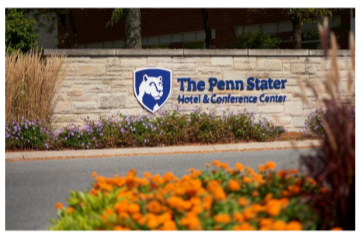
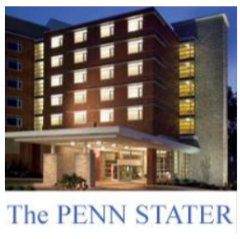
Technical Development Sessions: This year’s theme is “Healthy Buildings and Return to the New Normal”. Technical sessions will be held in-person on Thursday with lunch and breaks provided for those in attendance. CEUs will be provided. Keynote speakers include Dr. Bill Bahnfleth of PSU Faculty and Bill McQuade of AHRI. The Regional Caucus will be held Thursday evening with the Regional Business Meetings held on Friday.
There are many family-friendly venues in the State College Area including the famous Penn State Creamery (ice cream research, education, production, and retail outlet). The welcome reception will be held in the Club Café of the Pegula Ice Rink on Friday evening
from 5:30 to 9:00 pm. The Pegula Ice Rink is PSU’s state of the art ice arena, home to both competitive sports and community events. We hope to offer ice time on the rink at the beginning of the reception for family skating. Highlights of the CRC will include the Presidential Luncheon on Friday, a Leadership Workshop on Saturday morning, and the Regional Awards Luncheon on Saturday afternoon. Joining us in-person for the CRC will be Mick Schwedler, 2021-2022 Society President and Don Brandt,
2021-2022 Society Vice President.
